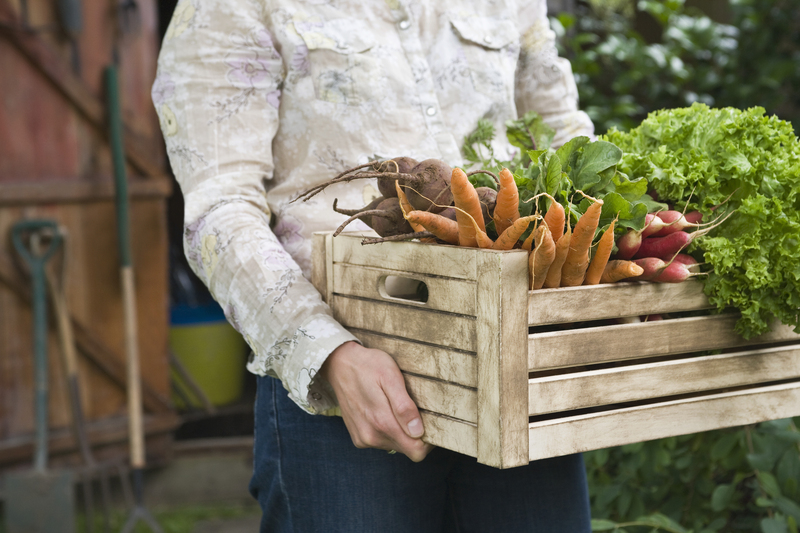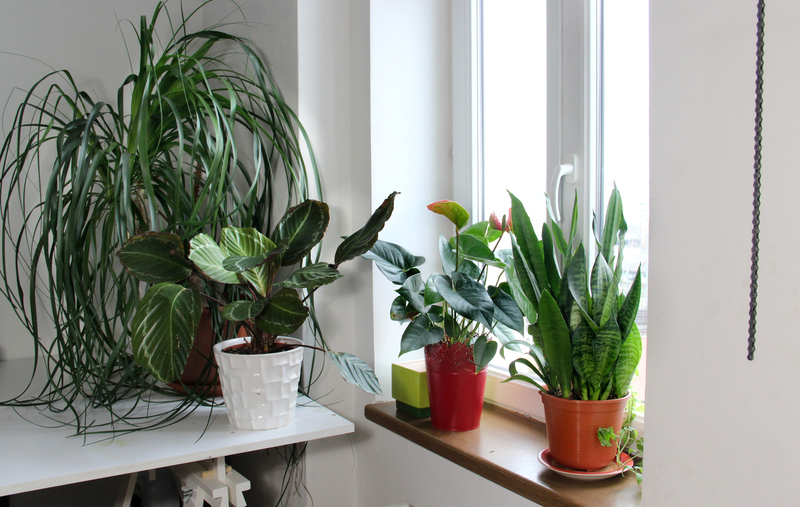Exploring the Art of Container Gardening
Posted on 31/08/2025
Exploring the Art of Container Gardening
Container gardening is a versatile and rewarding way to bring the joy of plants into any space, no matter how large or small. Whether you're working with a sunny balcony, a shaded porch, or a tiny window sill, the art of growing plants in containers opens up endless possibilities for creativity and beautification. In this comprehensive guide, we will explore essential techniques, best plants, and design ideas to transform your home and outdoor area, making container gardening both accessible and enjoyable for gardeners of all levels.
What is Container Gardening?
Container gardening is the practice of growing plants exclusively in pots, tubs, baskets, or other portable vessels, instead of planting them directly in the ground. This method allows for flexible arrangements and easy management, especially in spaces where traditional gardening is not possible. The art of container gardening combines practicality with aesthetic appeal, allowing gardeners to experiment with plant combinations, colors, and heights.
Benefits of Container Gardening
- Space Efficiency: Ideal for small yards, balconies, and urban environments.
- Portability: Easily move plants to catch the sun, shelter from the cold, or change design aesthetics.
- Soil and Water Control: Manage soil quality and watering, reducing weeds and plant diseases.
- Design Flexibility: Experiment with vibrant colors, heights, and arrangements to suit your style.
- Year-Round Gardening: Grow plants indoors or outdoors, regardless of season.

Choosing the Best Containers for Your Plants
The first step in mastering the art of container gardening is selecting the right containers. There are a variety of materials to consider, each with unique advantages:
- Terracotta: Classic, porous, and ideal for allowing roots to breathe. They dry out quickly, so regular watering is essential.
- Plastic: Lightweight, retains moisture, and is easy to move. Modern designs mimic the look of stone or ceramic.
- Ceramic: Glazed pots are attractive and retain moisture better than terracotta but can be heavy.
- Wood: Rustic and insulating, perfect for larger plants. Ensure wood is treated to prevent rot.
- Metal: Sleek and contemporary, but can heat up quickly in the sun. Line with plastic for insulation.
- Hanging baskets: Excellent for cascading flowers and trailing vines, adding vertical interest.
Drainage is crucial: No matter the material, always ensure your container has drainage holes to prevent root rot. You can line the bottom with pebbles or gravel for additional drainage if needed.
Choosing the Right Size Container
The size of the container matters. When growing vegetables, herbs, or larger plants, choose a pot that offers enough depth and width for root expansion. Crowded roots restrict growth and reduce plant health.
- Small pots (6-8 inches): Good for herbs, succulents, or single annuals.
- Medium pots (10-14 inches): Suitable for small shrubs, flowering displays, or clusters of herbs and annuals.
- Large pots (16 inches +): Perfect for small trees, fruit bushes, or mixed arrangements.
Selecting Plants for Container Gardening
Container gardening gives you the freedom to choose almost any plant, but selecting the right type is essential for success. Consider the location (sun/shade), container size, and your preferred maintenance level. Here are some of the most popular options:
- Herbs: Basil, parsley, mint, thyme, and chives are container garden favorites. They offer flavor and fragrance and are easy to maintain on a sunny windowsill or patio.
- Vegetables: Tomatoes, peppers, lettuce, radishes, and green beans thrive in pots. Use larger containers for deeper roots crops like carrots or potatoes.
- Flowers: Petunias, geraniums, marigolds, begonias, and nasturtiums create vibrant displays throughout the growing season.
- Succulents and cacti: Low maintenance options that add texture with architectural shapes.
- Houseplants: Snake plant, peace lily, pothos, and spider plant can brighten indoor spaces year-round.
Mixing different types of plants in one pot--combining edibles with ornamentals--is a hallmark of container garden art, delivering both beauty and function.
Thrillers, Fillers, and Spillers
For stunning container displays, use the classic "thriller, filler, spiller" formula:
- Thrillers: Tall, attention-grabbing plants like ornamental grasses or dracaena in the center or back of the pot.
- Fillers: Mid-height, bushy plants such as petunias or coleus to provide fullness.
- Spillers: Trailing plants like sweet potato vine or ivy to cascade over the edge.
This technique creates visual balance and interest, embodying the essence of decorative container gardening.
Soil, Water, and Fertilizing Tips for Container Gardens
Choosing the Best Potting Mix
Garden soil is often too heavy for containers and can harbor pests or diseases. Use a high-quality potting mix designed for containers. Commercial blends offer excellent drainage and aeration. For specific plant needs, there are mixes designed for succulents or acid-loving plants.
- Customize your soil: Amend with compost or perlite for extra nutrients or improved drainage.
Watering Your Container Plants
Plants in containers can dry out faster than those in the ground. To keep them healthy:
- Check soil moisture: Insert your finger into the soil up to the first knuckle; water if it feels dry.
- Water deeply: Ensure water runs out the drainage holes at the bottom.
- Mulch the surface: A layer of mulch helps retain moisture and keeps roots cool.
Automatic drip irrigation or self-watering containers can make watering even easier for busy gardeners.
Fertilization Strategy
Because container soil nutrients are depleted faster, regular feeding is essential:
- Liquid fertilizers: Feed every 2-4 weeks during the growing season for lush growth and abundant blooms.
- Slow-release fertilizers: Mix into the potting soil at planting time for steady, season-long nutrients.
Design Ideas for Beautiful Container Gardens
The secret to eye-catching container gardens lies in color selection, texture, container placement, and seasonal creativity.
Color and Texture
- Monochromatic schemes: Use different shades of the same color for a calming effect.
- Contrasting colors: Pair colors opposite each other on the color wheel for visual punch (e.g., purple petunias with yellow marigolds).
- Foliage texture: Combine broad-leaved plants with spiky grasses for depth and interest.
Seasonal Displays
Change your plantings to reflect the seasons:
- Spring: Daffodils, tulips, pansies, and primroses offer a burst of early color.
- Summer: Annuals like zinnias, geraniums, and begonias shine in warm weather.
- Autumn: Mums, ornamental cabbages, and asters transition your garden into fall.
- Winter: Dwarf evergreens, holly, or heathers keep containers attractive year-round.
Maximizing Small Spaces
- Vertical gardening: Use wall-mounted pots, shelves, or stacked planters to grow upwards.
- Hanging baskets: Make the most of overhead space with cascades of blooms or trailing herbs.
- Group arrangements: Cluster different containers together at varying heights for dynamic impact.
Common Challenges and Solutions in Container Gardening
No gardening journey is complete without facing a few obstacles. Here's how to troubleshoot common container garden problems:
- Pests and diseases: Monitor regularly for aphids, spider mites, or fungal issues. Remove affected leaves and use organic pesticides if needed.
- Root-bound plants: If roots circle the pot or grow out drainage holes, it's time to repot into a larger container.
- Overwatering/Underwatering: Using containers with drainage and careful watering schedules helps maintain proper moisture.
- Nutrient deficiencies: Yellowing leaves or poor growth may indicate the need for more feeding or fresh soil.
Eco-Friendly and Creative Container Ideas
One of the joyful aspects of container gardening is reusing and recycling everyday objects:
- Repurposed items: Old boots, enamelware, watering cans, or baskets serve as whimsical planters.
- Upcycled containers: Convert wooden crates, tin cans, or wine barrels into unique gardenscapes.
- Eco-friendly choices: Choose biodegradable pots or those made from recycled materials for a greener garden.
Let your imagination run wild--containers are as much a part of your garden's story as the plants they hold!

Getting Started: Quick Steps for Beginners
If you're new to the art of container gardening, here's a simple guide to kick off your green-thumb journey:
- Pick your container--consider size, drainage, and style.
- Select the right plants for your sunlight and climate.
- Fill with quality potting mix and amend if needed.
- Arrange your plants using the thriller-filler-spiller method.
- Water thoroughly and place in the ideal spot.
- Feed regularly and enjoy your living art!
Pro tip: Start with easy-care plants like herbs or succulents if you are short on time or experience.
Conclusion: Embracing the Art and Joy of Container Gardening
The versatility and beauty of container gardening make it an ideal pursuit whether you're seeking relaxation, usefulness, or creative outlet. With thoughtfully chosen containers and plants, you can transform any space--urban or rural, indoors or out--into a vibrant garden retreat. Dive into the world of container gardening, and watch your surroundings come to life, one pot at a time!
Expert Tips for Thriving Container Gardens
- Rotate containers every few weeks to promote balanced growth.
- Clean containers at the end of each season to prevent disease buildup.
- Group pots with similar sunlight and watering needs for easier care.
- Add seasonal interest with decorative mulch, rocks, or garden ornaments.
Happy gardening! With each new planting, you'll discover more about the art and science of container gardening--and your own personal style. Let your creativity bloom!



